Global BioImaging recently hosted nine outstanding imaging scientists from Latin America for a week of training, networking and exchanging experiences between researchers, technical staff and managers of imaging research infrastructures.
(read in pdf format here: Seizing Global Networking Opportunities.pdf)

 Image Credit: Photolab/EMBL
Image Credit: Photolab/EMBL
The workshop held at EMBL in Heidelberg sought to foster regional and international collaborations, while emphasizing the vital role of open-access research infrastructures and training opportunities in advancing life sciences globally.
The imaging scientists brought a diverse range of expertise, from machine learning-based approaches for medical imaging to custom-made super-resolution microscopy and imaging of environmental samples exploring Latin America’s rich biodiversity. Not only in terms of research interests and fields, also their home countries were distinct and spanned the entire continent. “It took this trip to Heidelberg for all of us to meet and connect”, Andrés Romero-Carvajal from the Laboratorio de Biología del Desarrollo from the PUCE University in Quito, Ecuador, remarked.
This meeting between scientists from Latin America and Europe, with different backgrounds and expertise aimed to build a bridge to shared opportunities and resources.

Coming from Argentina, Brazil, Costa Rica, Ecuador, Guatemala, Honduras, Paraguay and Uruguay, the imaging scientists met at EMBL in Heidelberg to attend the week-long study visit.
One such initiative is Latin America BioImaging (LABI), a regional network represented by Andrés Olivera from Uruguay, one of the workshop participants. LABI’s mission is to build capacity within Latin America and give researchers access to cutting-edge imaging technology located in different institutes across the continent. “We have all the potential in our countries,” said Olivera. “What we lack is easy access to high-end microscopes, key consumables and training. With our community, we aim to connect researchers and infrastructures to fill this gap.”
The study visit kicked off by identifying key challenges faced by the Latin American bioimaging community, setting the stage to discuss strategies to overcome them throughout the rest of the week. Many of these challenges echo those encountered globally, such as:
- Lack of recognition of core facilities’ critical role in advancing life sciences
- Insufficient funding not only for equipment but also for long-term instrument maintenance and sustainable support for trained personnel
- Limited access to or knowledge of training opportunities
- Uncertain career prospects and lack of institutional support
- The challenge of offering training knowing that many researchers may leave the country for better opportunities elsewhere.
- Undervaluation of local capabilities, with a perception that technologies from regions like Europe or the U.S. are inherently superior
Establishing bonds between industry and academia
During the workshop’s Industry Networking Day, participants discussed the systemic challenges of collaborating with industry. Establishing contacts with companies often involves navigating layers of bureaucracy and geographical barriers, leading to inefficient project planning. Tight funding deadlines add another layer of difficulty when seeking partnerships for research projects. Despite these challenges, collaborations between research and industry remain crucial, as scientific advancements drive innovation and industry growth, and vice versa.
Open discussions with industry representatives such as Herbert Schaden from ZEISS1 and Robert Kirmse (Leica Microsystems), and Euro-BioImaging’s Industry Board Coordinator Claudia Pfander led to actionable strategies to tackle these regional challenges, including building better regional networks with instrument manufacturers.
Participants also explored the alignment between some of the biomedical research projects presented and industry technologies – and several projects led by the Latin American scientists demonstrated immediate potential for industry involvement.
 !
! 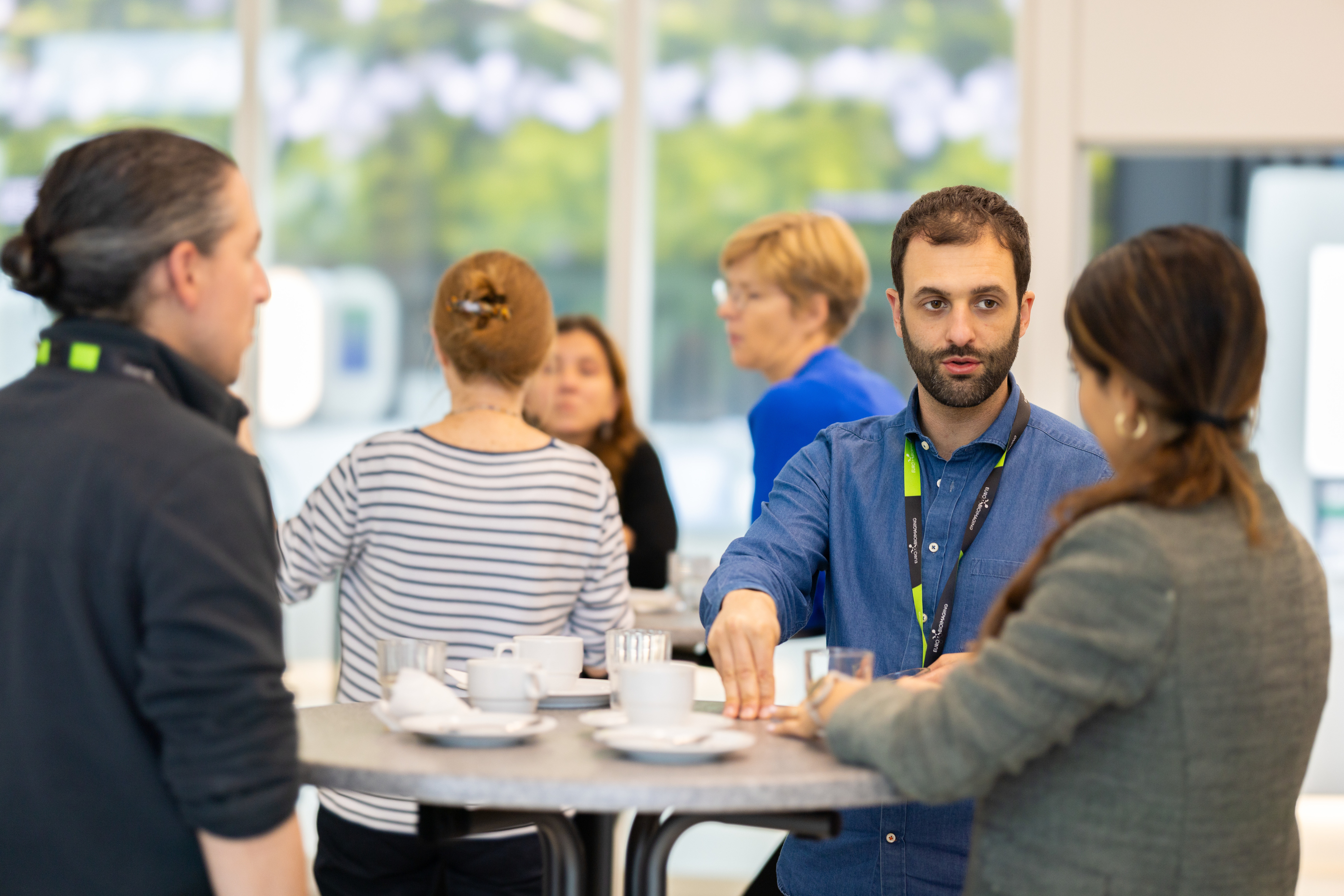
Left: A tour with Robert Kirmse through the Leica Open Innovation Labs at EMBL, Heidelberg. Right: Networking with coffee and cake. Image credits: Euro-BioImaging Team and Photolab/EMBL
For example, Carolina Centeno from Costa Rica discovered that extracts from blackberries promote skin regeneration after UV damage, such as that caused by sun exposure. She explained how her group is also trying to collaborate with the medical device industry by providing evidence obtained with fluorescence and electron microscopy. In recent years, this industry has grown significantly in Costa Rica, so enhancing its diversification and quality benefits not only the industry itself but also research centers and the country in general.
Another impactful project is the development of AI-based tools for early prediction of fetal abnormalities by Andrea Lara from Guatemala. This tool, which could revolutionize prenatal care, is designed to be accessible to healthcare services in rural areas, with the aim of reducing fetal and maternal mortality. Lara’s team is collaborating with midwives, nursery schools, and local hospitals to implement this innovative technology.
These examples showcase the immense potential for industry collaboration to accelerate the development of biomedical treatments. One of the key missions of the workshop was to identify ways to increase visibility for such projects and foster stronger ties between research and industry. By highlighting stories like Centeno’s and Lara’s, the workshop demonstrated how vital it is to engage industry partners and drive forward innovation in both Latin America and beyond.
The visit was initiated by the EU-Latin America Countries Working Group on Research Infrastructures (EU-CELAC) and funded by the European Commission. Co-chaired by the European Commission and Uruguay (representing LAC countries), this working group aims to align and harmonize bi-regional policy coordination, sharing best practices in the development and mapping of research infrastructures.
FAIR Data in BioImaging
While imaging technology and access to training are essential, they are only one aspect of research projects that culminates in data management, analysis, and storage—all critical steps before reaching the goal of publishing in high-impact journals.
Recognizing these data challenges, one day of the study visit was dedicated entirely to the principles of FAIR data (Findable, Accessible, Interoperable, Reusable) implementation. The participants also explored open-access analysis tools like ilastik, developed at EMBL, which are designed to simplify image analysis and ensure that data is processed and stored efficiently.
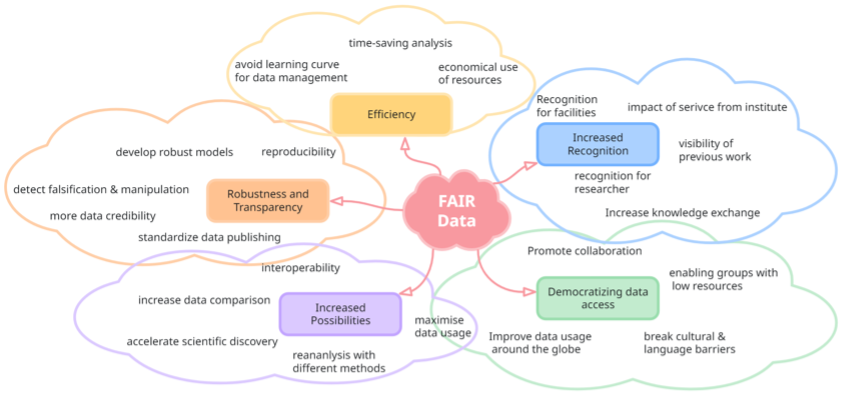
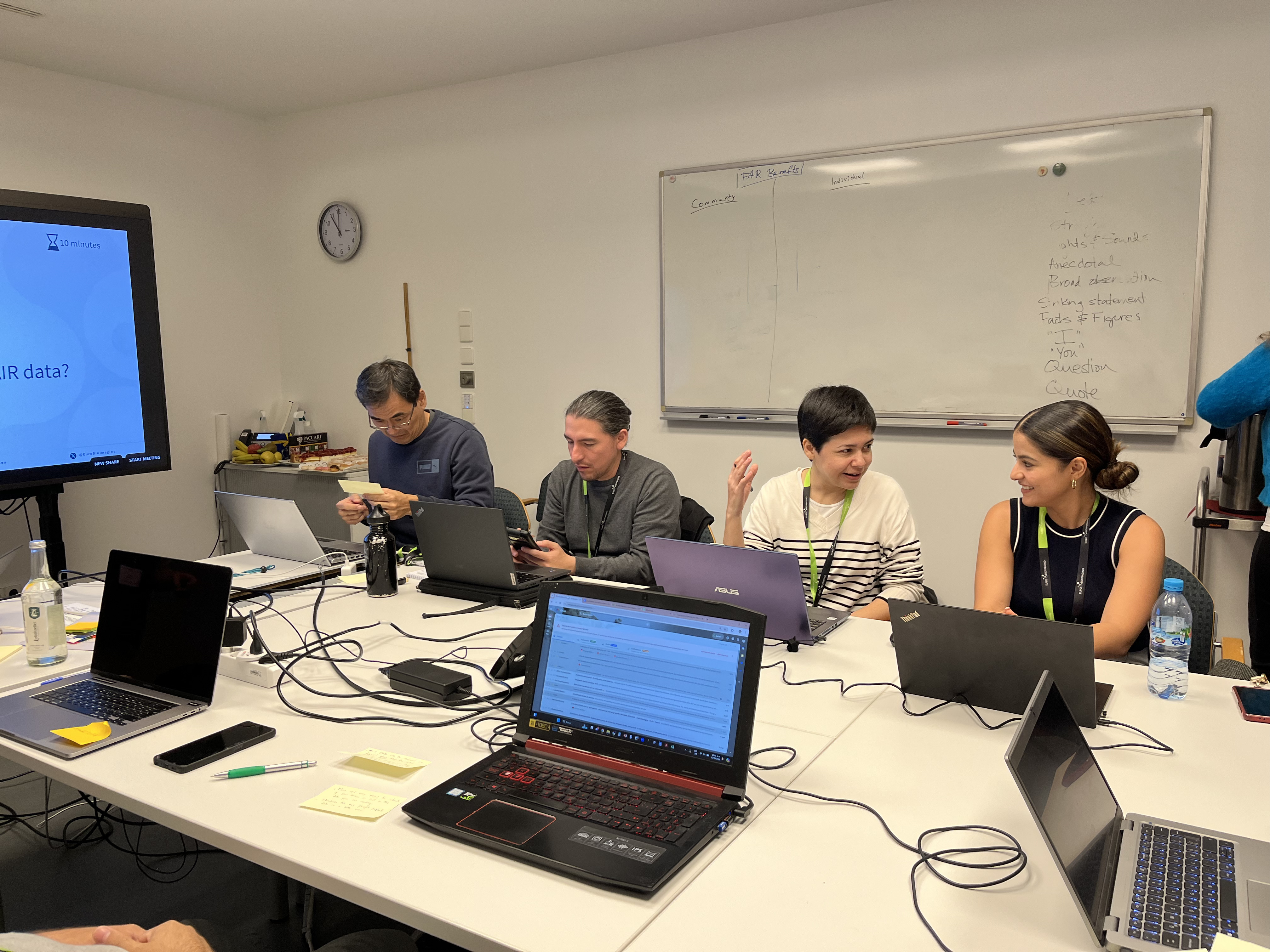
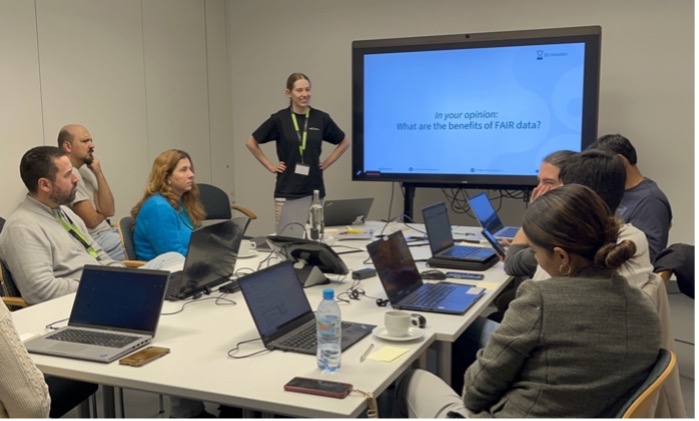

The imaging scientists and data experts discuss the principles and advantages of FAIR data in hands-on workshops. Bottom: FAIR image data steward Isabel Kemmer and Maria Mirza, scientific project manager, both from Euro-BioImaging, present FAIR data implementation strategies and foundingGIDE (Global Image Data Ecosystem).
Train to train
Another central objective of the study visit was to identify training opportunities, such as workshops, job shadowing, and specialized courses, offered by the global bioimaging community. Many of these programs aim to equip participants with the skills to return to their home institutions and share their knowledge with colleagues, students, and future scientists. This "train-the-trainer" model is essential for building capacity and fostering the next generation of leaders in bioimaging.
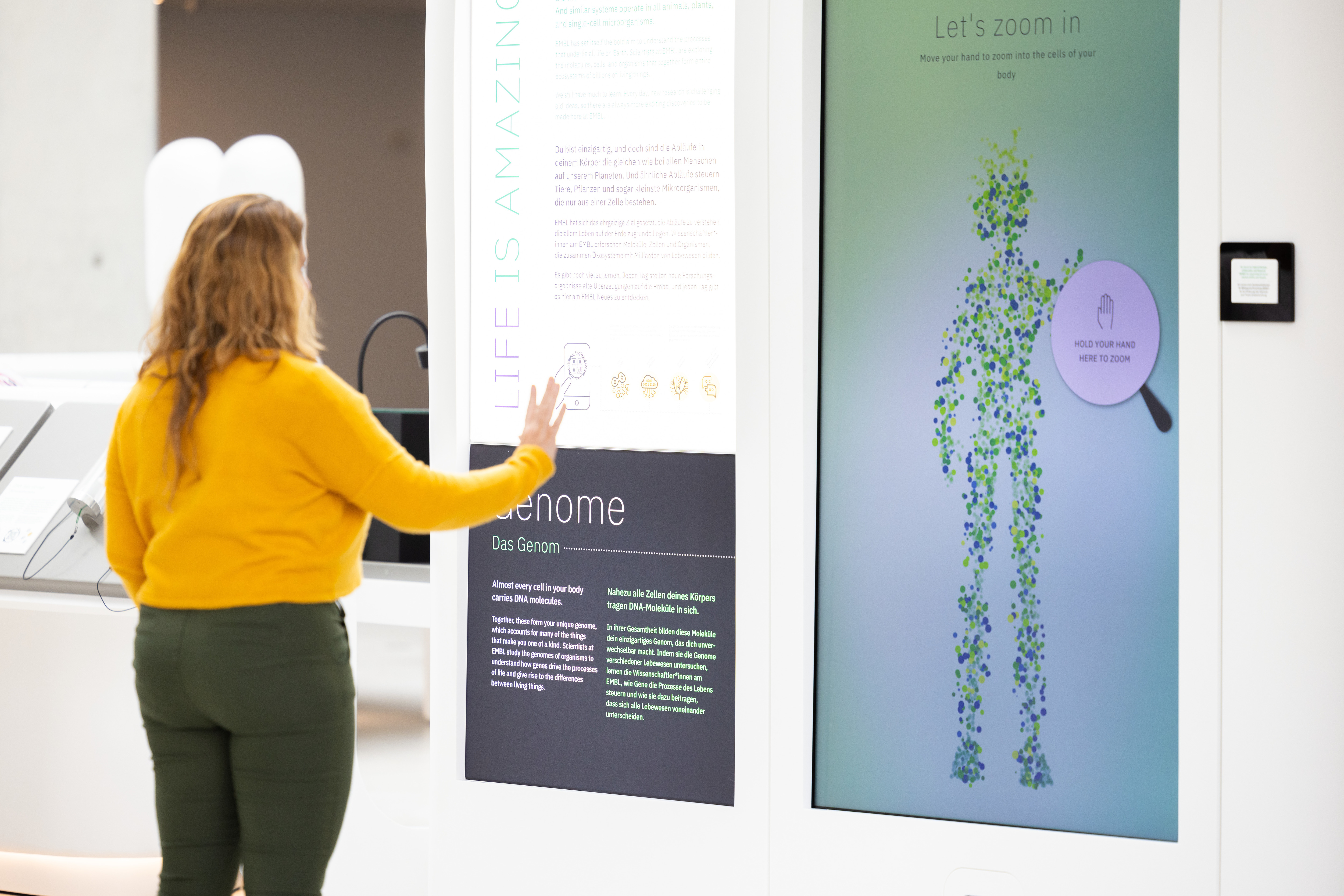
Virginia Helena Albarracin from the Centro Integral De Microscopia Electrónica, Argentina, explores the World of Molecular Biology exhibition at the EMBL Imaging Center. Image credit: Photolab/EMBL
The European Molecular Biology Laboratory (EMBL), with its open-access imaging infrastructure, served throughout the week as an exemplary model of how innovation can thrive through shared vision, resources, and effective outreach strategies. While access to resources remains a significant bottleneck, especially in low- and middle-income regions, the EMBL model underscored the importance of visibility in the scientific community—an issue that can be universally addressed regardless of resource limitations.
Ensuring that research is visible not only among peers but also to governments and other stakeholders is crucial for building a sustainable future. Greater visibility enhances collaboration, fosters partnerships, and increases the likelihood of securing funding through compelling impact reports. Recognizing this, the workshop placed a strong emphasis on science communication, highlighting how sharing research and harnessing the power of images can engage broader audiences and amplify the impact of bioimaging advancements.
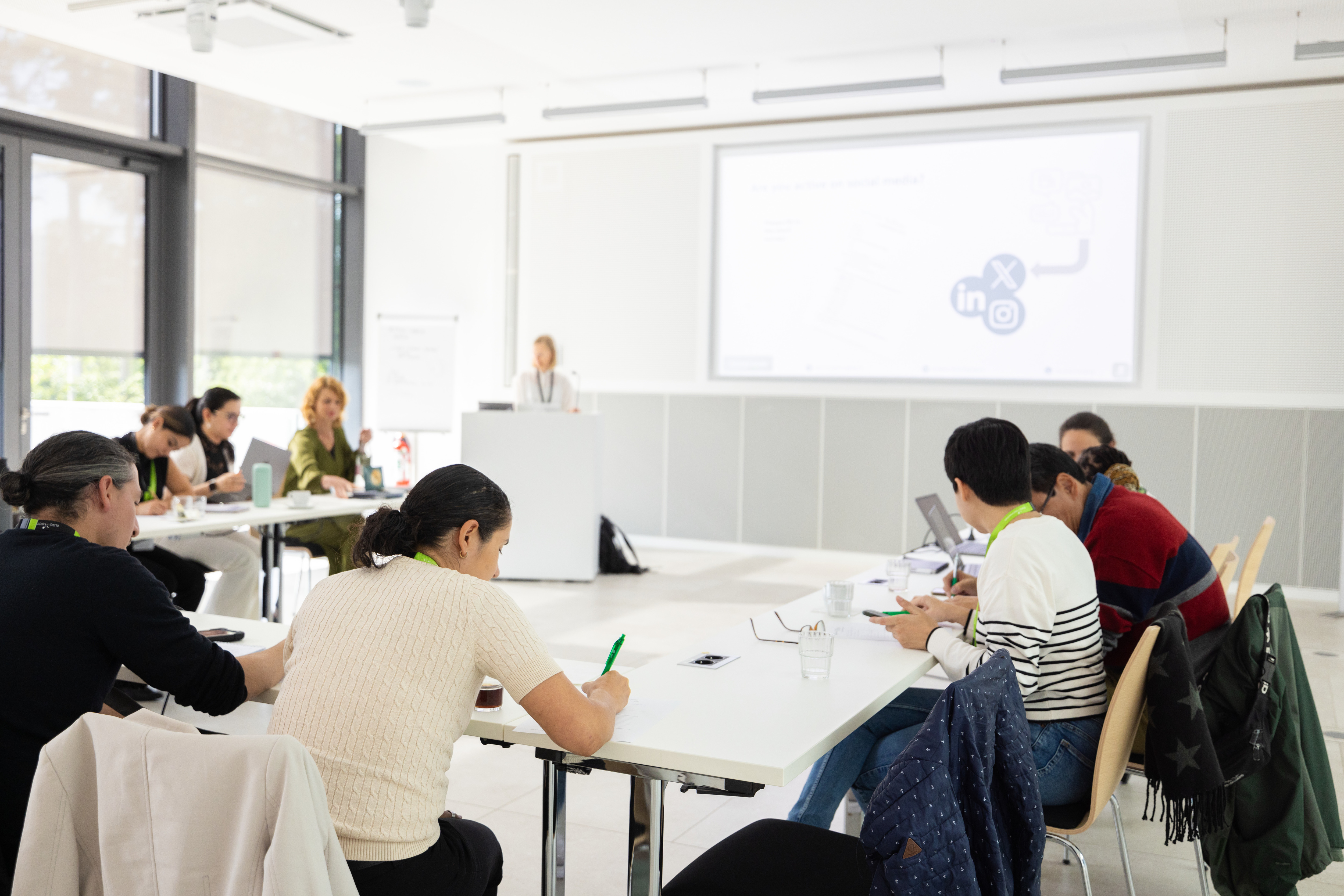
Discussing outreach strategies with external communications officer Marianna Childress Poli from Euro-BioImaging and creative team lead Tabea Rauscher from EMBL Communications. Image credit: Photolab/EMBL
Building a Sustainable Future for BioImaging
Increasing the visibility and impact of research infrastructures in both Latin America and Europe requires effective communication strategies, the dissemination of information about events and workshops, and staying updated on cutting-edge technological advances.
This week’s workshop offered a glimpse into the vast potential of imaging in Latin America, from electron microscopy research in Argentina to unraveling the evolution of reophilic fish of the Amazon. Whether focused on basic research or biomedical and agricultural applications, the projects presented highlighted the region’s rich diversity and innovation. To sustain and grow this capacity, communication channels are being established to spread awareness about training and funding opportunities within the global bioimaging network. More importantly, the connections made during the workshop between the participants represent a significant first step in integrating some of the countries not yet represented by LABI into the network, including Costa Rica, Guatemala and Paraguay, to foster collaboration and strengthen regional ties.
The future of bioimaging is collaborative
By empowering scientists from diverse regions and enabling global partnerships, we unlock new dimensions of innovation, advance basic and applied research in the life sciences, and work together to find solutions for a sustainable future.
Note: This group will continue to foster collaborations among its members and with European colleagues. Global Bioimaging is excited to support these exchanges, and everyone is welcome to participate. If you're based in Latin America, be sure to join LABI. For Imaging Scientists in Europe, keep an eye on Euro-BioImaging for updates.
1Chair of the Euro-BioImaging Industry Board
